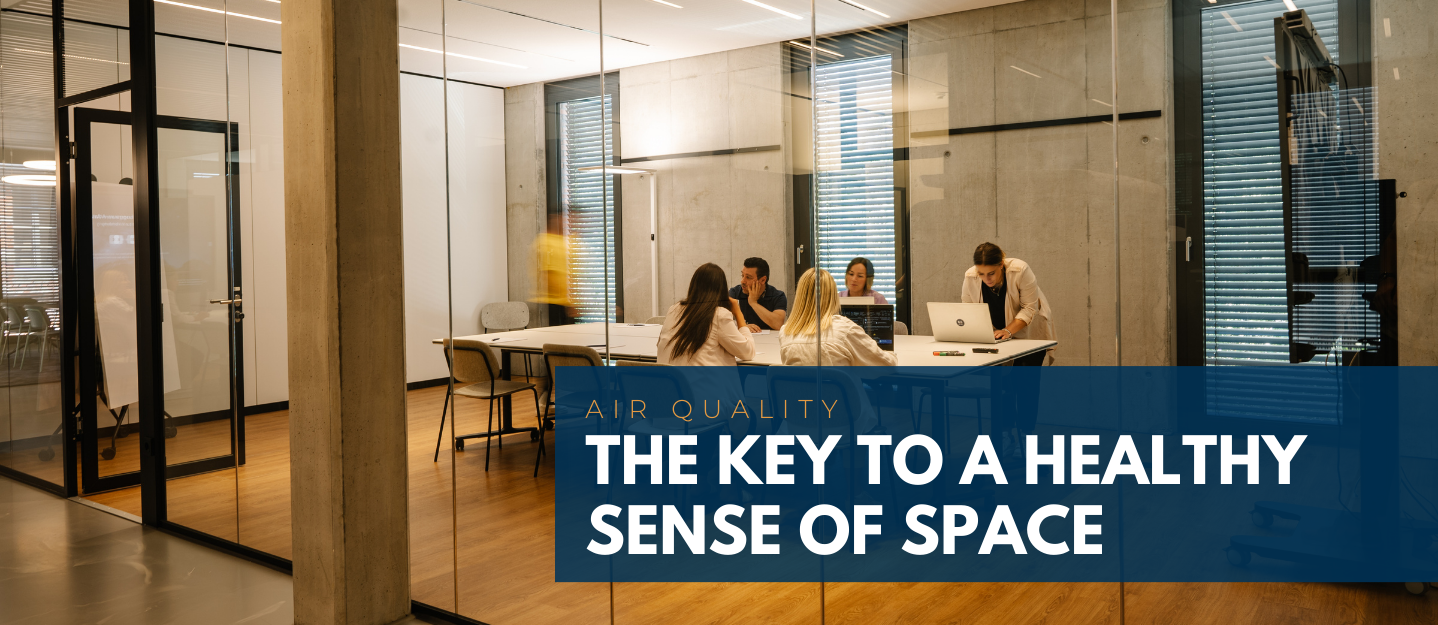In an incredibly large, beautiful and diverse world, humanity decided one day to spend an average of 90% of its time indoors. Whether in the office, at home or at your favorite store in town - all these spaces harbor barely perceptible but serious health risks, above all inadequate air quality.
Why bad air is harmful to health:
The air we breathe is crucial for the functioning of our bodies. Indoors, it often contains high concentrations of pollutants such as particulate matter, nitrogen dioxide, sulphur dioxide and volatile organic compounds (VOCs). These particles can penetrate deep into the lungs and cause breathing problems, especially in people with asthma or other respiratory diseases. Poor air quality therefore weakens the immune system and can lead to chronic health problems.
It is therefore crucial to take measures that improve and protect air quality both indoors and outdoors to preserve people's health and well-being.
Air quality can be planned
All buildings are preceded by comprehensive planning - this is where the air quality of the individual rooms can be significantly influenced. Are there enough natural ventilation options, such as windows and doors? Which ventilation system would you like to use? Which systems should be used to monitor aspects such as humidity and pollutant levels? How can the ventilation systems remain easily accessible for maintenance work? All these questions can be answered during the planning stage.
Smart buildings through intelligent planning - Topics such as digitalization and automation can also help to ensure good air quality in the building. If the ventilation system is combined with other controllable factors such as temperature, blinds and lighting, it makes a decisive contribution to the well-being of the people in the building.
When planning technical building equipment, Salvia Building Technology takes into account all of the customer's requirements and those of the building's future users. We offer the option of bundling all technical components and making them controllable and monitorable using an app. The building is thus brought to life and can be fully automated to meet every user requirement.
In addition to individuality through digitalization, the aspect of sustainability is also covered. A smart building only consumes as much energy as necessary and keeps most of the energy in the building, where it can be converted to supply other technical components. Ultimately, the technology in a smart building can be comprehensively monitored so that defects and malfunctions can be detected and rectified at an early stage - this ensures longevity and reduces unnecessary material consumption.
Overall, air quality in buildings is not only an aspect of comfort, but also a fundamental factor for our health. Through conscious design, regular maintenance and the use of the latest technologies, we can ensure that the air we breathe indoors is clean and healthy, contributing to a better quality of life for all.

